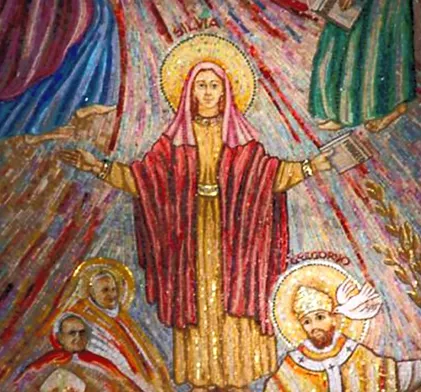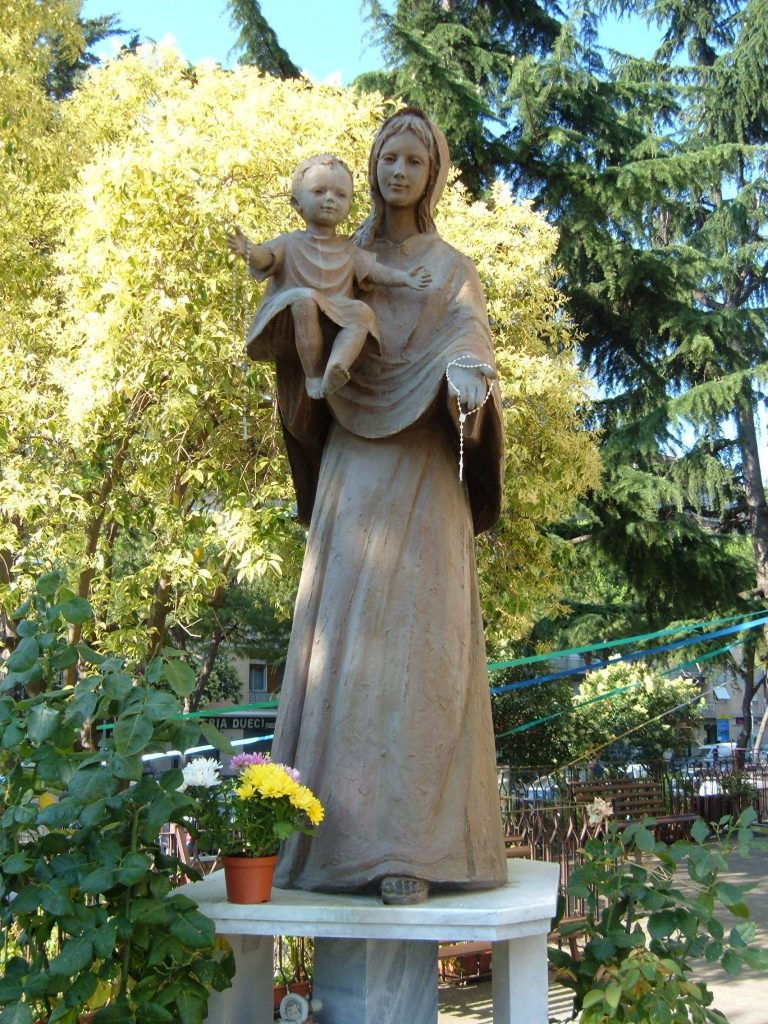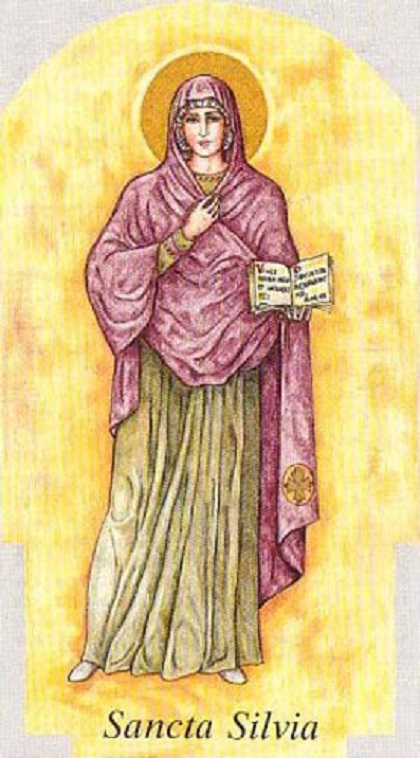Silvia was a native of the region of Sicily and she had married Gordianus of Rome, both born of distinguished families.
Gordianus was a noble Roman of senatorial rank and owned large estates in Sicily and a mansion on the Caelian Hill in Rome. He was a descendant of Pope Felix.
They had 2 sons but only one survived, Gregory. Sylvia was known for her great piety even with her beauty. Gordianus was a deacon, very religious, and both contributed eminently to the religious training and education of their son.
Rome was captured by the Goths under Totila, and then abandoned, only to be garrisoned by Belisarius and then besieged in vain by the Goths again. Gregory had vivid memories and experiences of these circumstances which attribute to the sadness in his future writings.
Gordian died in 573 and Gregory inherited their home, a larger property, and converted it into a chapel and monastery. His devotion, sanctity and intellectual brilliance stemmed from his parents.
Sylvia devoted herself entirely to Christ and retired to a solitary and quasi-monastic life in a little abode near the Church of St. Sava in Aventine. It became her custom to frequently send fresh vegetables to her son and the monastery.
Sylvia died around 592. Gregory became Pontiff and had his parents depicted in a mosaic portrait in the monastery of St. Andrew. In the sixteenth century, Pope Clement VIII had Sylvia inscribed in the Roman Martyrology. She is also venerated by the Eastern Orthodox Church.
Their son came to be known as Saint Pope Gregory the Great, a Church doctor.
She is a patron saint of pregnant women.
Her feast day is November 5.
For God’s Glory.


